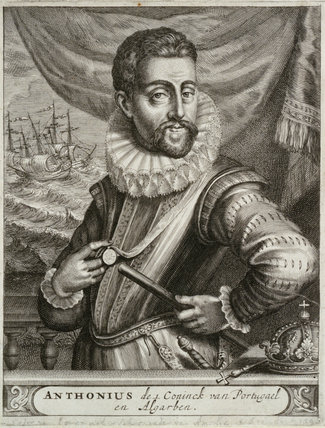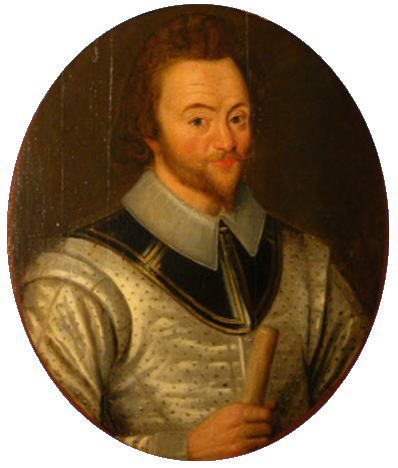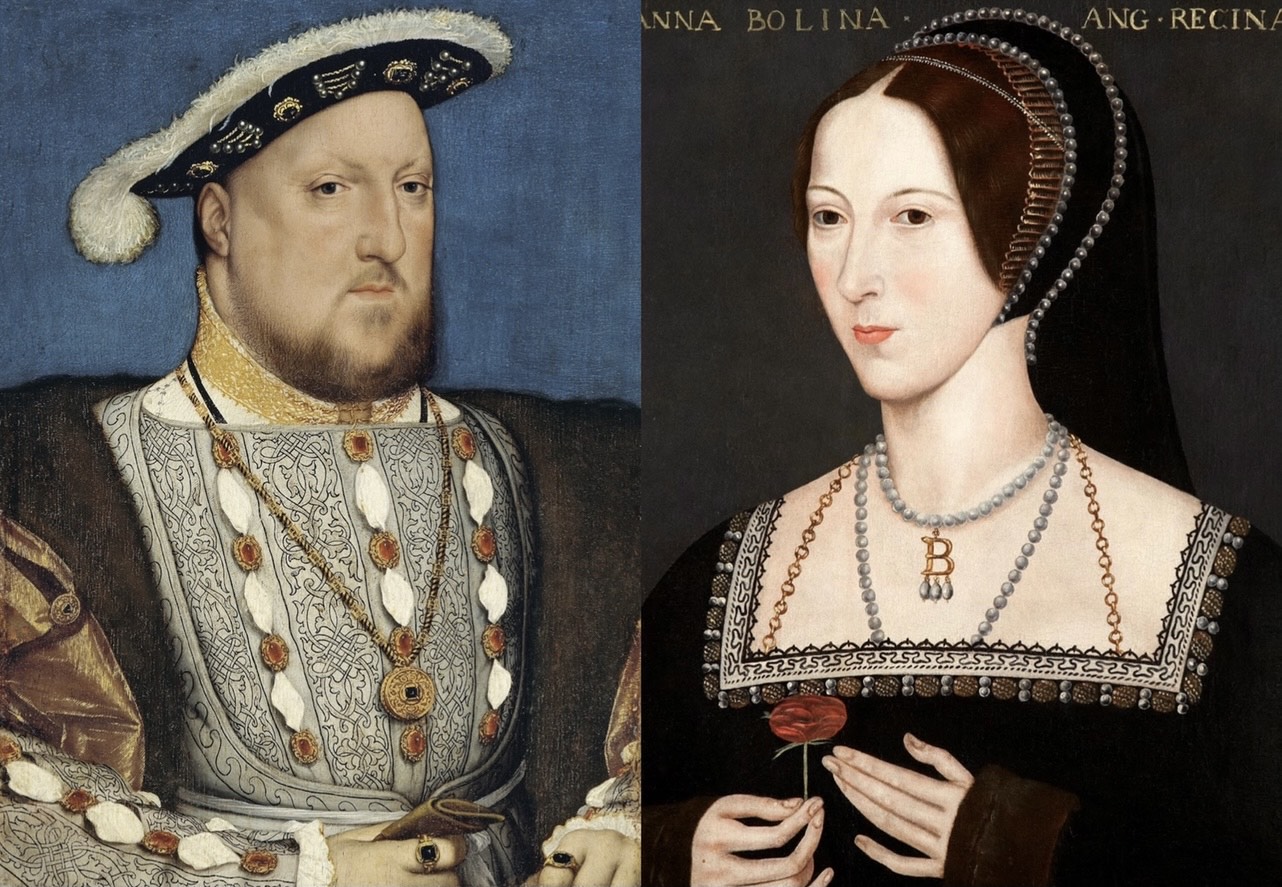|
English Armada
The English Armada (), also known as the Counter Armada, Drake–Norris Expedition, Portugal Expedition, was an attack fleet sent against Spain by Queen Elizabeth I of England that sailed on 28 April 1589 during the undeclared Anglo-Spanish War (1585–1604), Anglo-Spanish War (1585–1604) and the Eighty Years' War. Led by Sir Francis Drake as admiral and John Norris (soldier), Sir John Norris as general, it failed to drive home the advantage that England had gained resulting from their defeat of the Spanish Armada in the previous year. The Spanish victory marked a revival of Philip II of Spain, Philip II's naval power through the next decade. Background After the failure of the Spanish Armada and its return to Spain, England's Queen Elizabeth I's intentions were to capitalize upon Spain's temporary weakness at sea and to compel King Philip II of Spain to negotiate for peace. Her advisors had more ambitious plans. William Cecil, 1st Baron Burghley noted that the expedition ... [...More Info...] [...Related Items...] OR: [Wikipedia] [Google] [Baidu] |
Anglo-Spanish War (1585)
Anglo-Spanish War may refer to: * Hundred Years' War (1337–1453), includes the War of the Breton Succession, the Castilian Civil War, the War of the Two Peters, and the 1383–1385 Portuguese interregnum * Third Fernandine War (1381–1382) * War of the League of Cognac (1526–1530), part of the Italian Wars * Second Desmond Rebellion (1579-1583), part of the Desmond rebellions * Anglo-Spanish War (1585–1604), including the Spanish Armada, the English Armada and the Nine Years' War (Ireland), part of the Eighty Years' War * Dutch–Portuguese War (1601–1661), part of the Eighty Years' War * Palatinate campaign (1620–1623), part of the Thirty Years' War * Anglo-Spanish War (1625–1630), part of the Thirty Years' War ( Eighty Years' War, 1621–1648) * Anglo-Spanish War (1654–1660), part of the Franco-Spanish War * Caribbean War (1660–71), follow on from previous war, based in Caribbean. * Portuguese Restoration War (1662–1668), English support for Portugal * War ... [...More Info...] [...Related Items...] OR: [Wikipedia] [Google] [Baidu] |
John Norris (soldier)
Sir John Norris, or Norreys (''ca.'' 1547 – 3 September 1597), of Rycote, Oxfordshire, and of Yattendon and Notley in Berkshire, was an Kingdom of England, English soldier. The son of Henry Norris, 1st Baron Norreys, he was a lifelong friend of Elizabeth I of England, Queen Elizabeth. The most acclaimed English soldier of his day, Norreys participated in every Elizabethan theatre of war: in the French Wars of Religion, Wars of Religion in France, in Flanders during the Eighty Years' War of Dutch liberation from Spain, in the Anglo-Spanish War (1585), Anglo-Spanish War, and above all in the Tudor conquest of Ireland. Early life The eldest son of Henry Norris, 1st Baron Norreys, Henry Norreys by his marriage to Margery Norris, Marjorie Williams, Norreys was born at Yattendon Castle. His Henry Norris (courtier), paternal grandfather had been executed after being found guilty of adultery with Anne Boleyn, Queen Anne Boleyn, the mother of Elizabeth I of England, Queen Elizabeth. ... [...More Info...] [...Related Items...] OR: [Wikipedia] [Google] [Baidu] |
Queen Elizabeth I
Elizabeth I (7 September 153324 March 1603) was Queen of England and Ireland from 17 November 1558 until her death in 1603. She was the last and longest reigning monarch of the House of Tudor. Her eventful reign, and its effect on history and culture, gave name to the Elizabethan era. Elizabeth was the only surviving child of Henry VIII and his second wife, Anne Boleyn. When Elizabeth was two years old, her parents' marriage was annulled, her mother was executed, and Elizabeth was declared illegitimate. Henry restored her to the line of succession when she was 10. After Henry's death in 1547, Elizabeth's younger half-brother Edward VI ruled until his own death in 1553, bequeathing the crown to a Protestant cousin, Lady Jane Grey, and ignoring the claims of his two half-sisters, Mary and Elizabeth, despite statutes to the contrary. Edward's will was quickly set aside and the Catholic Mary became queen, deposing Jane. During Mary's reign, Elizabeth was imprisoned for nea ... [...More Info...] [...Related Items...] OR: [Wikipedia] [Google] [Baidu] |
Spanish Armada
The Spanish Armada (often known as Invincible Armada, or the Enterprise of England, ) was a Spanish fleet that sailed from Lisbon in late May 1588, commanded by Alonso de Guzmán, Duke of Medina Sidonia, an aristocrat without previous naval experience appointed by Philip II of Spain. His orders were to sail up the English Channel, join with the Duke of Parma in Flanders, and escort an invasion force that would land in England and overthrow Elizabeth I. Its purpose was to reinstate Catholicism in England, end support for the Dutch Republic, and prevent attacks by English and Dutch privateers against Spanish interests in the Americas. The Spanish were opposed by an English fleet based in Plymouth. Faster and more manoeuvrable than the larger Spanish galleons, its ships were able to attack the Armada as it sailed up the Channel. Several subordinates advised Medina Sidonia to anchor in the Solent and occupy the Isle of Wight, but he refused to deviate from his instructions to ... [...More Info...] [...Related Items...] OR: [Wikipedia] [Google] [Baidu] |
Sir Francis Drake
Sir Francis Drake ( 1540 – 28 January 1596) was an English Exploration, explorer and privateer best known for making the Francis Drake's circumnavigation, second circumnavigation of the world in a single expedition between 1577 and 1580 (being the first English expedition to accomplish this). He is also known for participating in the early English slaving voyages of his cousin, John_Hawkins_(naval_commander), John Hawkins, and John_Lovell_(slave_trader), John Lovell. Having started as a simple seaman, in 1588 he was part of the fight against the Spanish Armada as a vice admiral. At an early age, Drake was placed into the household of a relative, William Hawkins (died c. 1554), William Hawkins, a prominent sea captain in Plymouth. In 1572, he set sail on his Francis Drake's expedition of 1572–1573, first independent mission, privateering along the Spanish Main. Drake's circumnavigation began on 15 December 1577. He crossed the Pacific Ocean, until then an area of exclusive ... [...More Info...] [...Related Items...] OR: [Wikipedia] [Google] [Baidu] |
Eighty Years' War
The Eighty Years' War or Dutch Revolt (; 1566/1568–1648) was an armed conflict in the Habsburg Netherlands between disparate groups of rebels and the Spanish Empire, Spanish government. The Origins of the Eighty Years' War, causes of the war included the Reformation, Centralised state, centralisation, excessive taxation, and the rights and privileges of the Dutch nobility and cities. After Eighty Years' War, 1566–1572, the initial stages, Philip II of Spain, the sovereign of the Netherlands, deployed Army of Flanders, his armies and Eighty Years' War, 1572–1576, regained control over most of the rebel-held territories. However, Spanish Fury, widespread mutinies in the Spanish army caused a general uprising. Under the leadership of the exiled William the Silent, the Catholic and Protestant-dominated provinces sought to establish religious peace while jointly opposing the king's regime with the Pacification of Ghent, but the Eighty Years' War, 1576–1579, general rebelli ... [...More Info...] [...Related Items...] OR: [Wikipedia] [Google] [Baidu] |
Anglo-Spanish War (1585–1604)
The Anglo-Spanish War (1585–1604) was an intermittent conflict between the Habsburg Spain, Habsburg Kingdom of Spain and the Kingdom of England that was never formally declared. It began with England's military expedition in 1585 to what was then the Spanish Netherlands under the command of Robert Dudley, 1st Earl of Leicester, Robert Dudley, Earl of Leicester, in support of the Eighty Years' War, Dutch rebellion against Spanish Habsburg rule. In large-scale campaigns, the English repelled the Spanish Armada in 1588, while Spain repelled the English Armada in 1589. The war included much English privateering against Spanish ships, and several widely separated battles. The war dragged on towards the end of the sixteenth century; England and Spain intervened French Wars of Religion#War with Spain (1595–1598), in France in the 1590s and in Nine Years War (Ireland), Ireland from 1601. The Eighty Years' War, 1599–1609, campaign in the Netherlands saw a Spanish veteran force defe ... [...More Info...] [...Related Items...] OR: [Wikipedia] [Google] [Baidu] |
Galleons
Galleons were large, multi-decked sailing ships developed in Spain and Portugal. They were first used as armed cargo carriers by Europeans from the 16th to 18th centuries during the Age of Sail, and they were the principal vessels drafted for use as warships until the Anglo-Dutch Wars of the mid-17th century. Galleons generally carried three or more masts with a lateen fore-and-aft rig on the rear masts, were carvel built with a prominent squared off raised stern, and used square-rigged sail plans on their fore-mast and main-masts. Such ships played a major role in commerce in the sixteenth and seventeenth centuries and were often drafted into use as auxiliary naval war vessels—indeed, they were the mainstay of contending fleets through most of the 150 years of the Age of Exploration—before the Anglo-Dutch wars made purpose-built warships dominant at sea during the remainder of the Age of Sail. Terminology The word galleon has had differing meanings at different ... [...More Info...] [...Related Items...] OR: [Wikipedia] [Google] [Baidu] |
Teodósio II, Duke Of Braganza
Teodósio II, 7th Duke of Braganza (28 April 1568 – 29 November 1630) was a Portuguese nobleman and father of João IV of Portugal. He is known for his allegiance to King Philip I of Portugal. Biography As a child, Teodósio was brought to the court and made page to the king Sebastian I of Portugal. The king was very fond of him and in 1578 insisted on taking him to Africa in the expedition against the king of Morocco. This military campaign was doomed. During the ill-fated battle of Alcácer Quibir, Teodósio remained at the side of his king until the situation become extremely dangerous. Then, Sebastian ordered servants to take the ten-year-old child to safety behind the lines. The young man was not happy to be set aside and ran away at the first opportunity. Teodósio mounted a horse and went to the front lines of the battle, pursued by very scared servants. Eventually, like many others, he was wounded and taken prisoner. Back in Portugal, his father João went mad with gr ... [...More Info...] [...Related Items...] OR: [Wikipedia] [Google] [Baidu] |
Alonso De Bazán
Alonso de Bazán, son of Admiral Álvaro de Bazán the Elder, Marquis del Viso, and brother of the better known Admiral Álvaro de Bazán, 1st Marquis of Santa Cruz, was a Spanish naval commander during the Anglo–Spanish War (1585–1604) and the Eighty Years' War. Notable military actions In 1584, inspired by his father's work to create design of ships which combined sailing and rowing power, he created the ''galizabra'', a hybrid of galley and zabra.E. G. Torralba Pérez, ''Las fragatas de vela de la armada espanola 1600-1850 (su evolucion técnica).'' In 1588, he was intended have been part of a fleet which would support the Spanish Armada that was invading England. After the failure of invasion, he transported infantry troops to La Coruña and Lisbon, in preparation of an incoming English counter-offensive. In 1589, after the defeat of the English Armada, commanded by Sir Francis Drake, Alonso de Bazan went after the English fleet with his galleys and captured three ve ... [...More Info...] [...Related Items...] OR: [Wikipedia] [Google] [Baidu] |
Martín De Padilla Y Manrique, 1st Count Of Santa Gadea
Martín de Padilla y Manrique, 1st Count of Santa Gadea, '' Adelantado of Castile'' ( Calatañazor, present-day Castile and León, 1540 – El Puerto de Santa María, 1602), secretary of state and war of Philip II of Spain, was a Spanish Admiral during the Anglo–Spanish War (1585–1604), French Wars of Religion and the Eighty Years' War. His most notable naval engagements included the Spanish Armada, battle with the Counter Armada and the Battle of the Gulf of Almería (1591). Padilla commanded a squadron of galleys that sank four cargo vessels from the English Armada off Lisbon Lisbon ( ; ) is the capital and largest city of Portugal, with an estimated population of 567,131, as of 2023, within its administrative limits and 3,028,000 within the Lisbon Metropolitan Area, metropolis, as of 2025. Lisbon is mainlan ... in 1589. References External linksDon Martín de Padilla y Manrique, Count of Santa Gadea {{DEFAULTSORT:Padilla y Manrique, Martin, 1st Count of San ... [...More Info...] [...Related Items...] OR: [Wikipedia] [Google] [Baidu] |
Pedro Henriquez De Acevedo, Count Of Fuentes
Pedro Henriquez d'Azevedo y Alvarez de Toledo, Count of Fuentes de Valdepero (1525 – 22 July 1610) was a Spanish general and statesman. Biography Born at Zamora, he was a page at the court of Philip II of Spain, training in Naples in 1557, aged 32 with Fernando Alvarez de Toledo, 3rd Duke of Alba, (1507–1582), Governor of the Duchy of Milan, 1555–1556, Viceroy of Naples, 1556–1557, Governor of the Habsburg Netherlands, Viceroy of Portugal, 1582–1584, He took part in the 1580 campaign in Portugal under the Duke of Alba and in 1582 was given supreme command over the Spanish troops. In 1589, as Captain General of Portugal, he successfully defended Lisbon against the attack by the English Armada, led by John Norreys and Francis Drake. Sent in 1591 by the king to the Netherlands, he assisted after the death of Alexander Farnese, Duke of Parma, his successor Peter Ernst I von Mansfeld-Vorderort and later Ernst of Austria, after whose death he became intermittent s ... [...More Info...] [...Related Items...] OR: [Wikipedia] [Google] [Baidu] |






